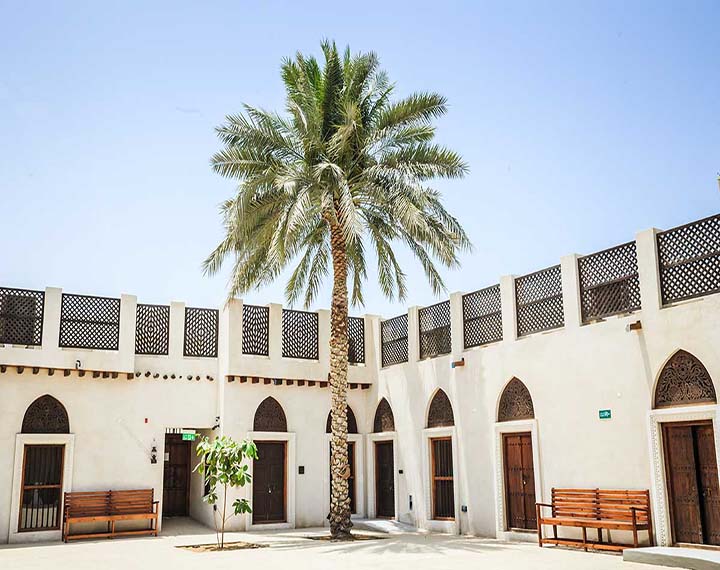Bait Al Naboodah Museum
Bait Al Naboodah first opened its doors as a museum on November 14, 1995.
Bait Al Naboodah offers you the opportunity to learn about the authentic architectural designs of traditional Emirati houses, as well as the lifestyle and values of our ancestors. This house is a unique model of the marvelous art of architecture of Sharjah. Built in the mid-19th century, the museum has been renovated to reveal the life and times of Obaid Al Naboodah and to explore how the architecture of Bait Al Naboodah was influenced by the pearl trade.
This house originally belonged to the late Obaid bin Eissa Bin Ali Al Shamsi, nicknamed Al Naboodah. He was a prominent pearl merchant who held commercial ties with India, Africa and France. Al Naboodah lived in this house, which was built in around 1845, with his three wives and children. The construction of the house went through several phases as his family grew.
This charming two-storey house is built around a large courtyard with walls made of coral. What makes Bait Al Naboodah architecturally unique among Sharjah’s other traditional buildings are the teak columns and intricate plaster and wood carvings found throughout the home. Also, instead of barjeel (wind towers), Bait Al Naboodah features malaqaf (wind scoops) built into the walls.
Bait Al Naboodah was remarkable for its design, beauty and size. The building respected local design elements and cultural practices, while incorporating architectural influences from the broader Gulf region. It was one of Sharjah’s largest houses and is an example of a grand coastal home.



